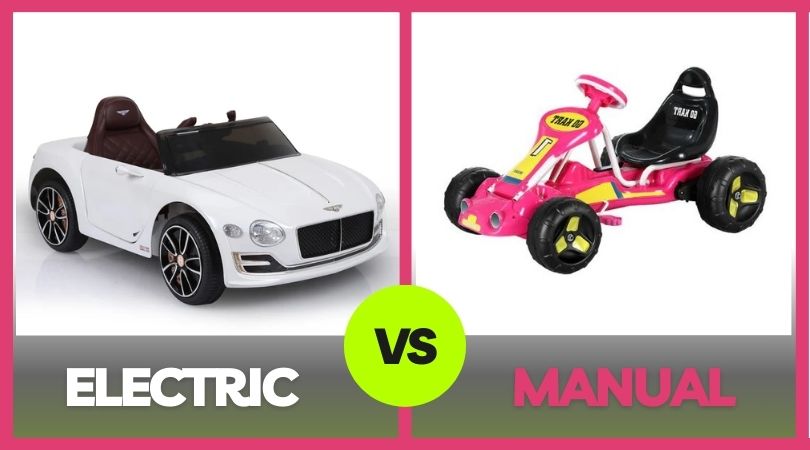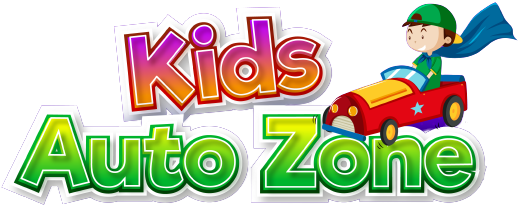
Aug 23 , 2024
Electric vs. Manual Ride-On Toys: Which Is Right for Your Child?
When it comes to choosing a ride-on toy for your child, you have two main options: electric and manual ride-ons. Both types of toys offer unique benefits and cater to different needs and preferences. Understanding the differences between electric and manual ride-on toys can help you make an informed decision and select the best option for your child’s age, development, and play style.
1. Understanding Electric Ride-On Toys

Electric ride-on toys are battery-powered vehicles that provide a realistic driving experience for children. These toys come in various models, including cars, motorcycles, ATVs, and trucks. Here's a closer look at the features and benefits of electric ride-ons:
Advantages of Electric Ride-On Toys:
- Realistic Driving Experience: Electric ride-ons often come with features like working headlights, sound effects, and even music players, providing a more immersive and enjoyable experience for kids.
- Ease of Use: These toys are simple to operate, usually requiring just a press of a pedal or a push of a button to start. Some models even include remote controls for parental supervision.
- Less Physical Effort: Children do not need to pedal or push the toy manually, making electric ride-ons suitable for younger children or those with less physical strength.
- Extended Playtime: Many electric ride-ons come with rechargeable batteries that offer extended playtime compared to manual options, allowing for longer periods of fun.
Disadvantages of Electric Ride-On Toys:
- Battery Dependency: Electric ride-ons require regular charging, which can limit playtime if the battery runs out. Additionally, the battery life can vary depending on usage and model.
- Higher Cost: Generally, electric ride-ons are more expensive than manual options due to their advanced features and battery technology.
- Maintenance: Electric ride-ons may require more maintenance, including battery care and occasional repairs, which can add to the overall cost and effort.
2. Exploring Manual Ride-On Toys

Manual ride-on toys include classic models like tricycles, balance bikes, and pedal cars. These toys are powered by the child's physical effort, whether through pedaling, pushing, or balancing. Let’s explore the key aspects of manual ride-ons:
Advantages of Manual Ride-On Toys:
- Physical Exercise: Manual ride-ons encourage physical activity, helping children develop their gross motor skills, balance, and coordination. Pedaling, steering, and balancing all contribute to their physical development.
- Cost-Effective: Manual ride-ons are typically less expensive than electric models. They do not require batteries or complex mechanisms, making them a budget-friendly choice.
- Simplicity and Durability: With fewer moving parts and no electronics, manual ride-ons are often more durable and easier to maintain. They are less prone to mechanical issues and require minimal upkeep.
- No Charging Required: Since manual ride-ons do not rely on batteries, there is no need to worry about charging or battery replacements. This makes them more convenient for spontaneous play.
Disadvantages of Manual Ride-On Toys:
- Physical Effort Required: Manual ride-ons require children to use their strength to pedal, push, or balance. This might not be suitable for younger children or those who find physical exertion challenging.
- Limited Features: Compared to electric ride-ons, manual toys often have fewer features and may lack the realistic driving experience that some children enjoy.
- Shorter Playtime: Without the convenience of powered movement, manual ride-ons may require more effort from children, which could limit the duration of play.
3. Choosing the Right Ride-On Toy for Your Child
When deciding between electric and manual ride-on toys, consider the following factors to determine which is best suited for your child:
1. Age and Developmental Stage:
- Young Toddlers (1-3 years): For toddlers who are still developing their motor skills and coordination, manual ride-ons like push toys or balance bikes are ideal. They help improve balance and physical strength.
- Preschoolers (3-5 years): As children grow and develop more physical strength and coordination, they can enjoy both manual and electric ride-ons. Electric cars with simple controls can be exciting for this age group.
- Older Kids (5 years and up): Older children might enjoy more advanced electric ride-ons with additional features or manual options that offer more physical challenges.
2. Safety Considerations:
- Electric Ride-Ons: Ensure the toy has safety features like seat belts, stable designs, and parental controls. Check the maximum speed and ensure it’s appropriate for your child’s age and skill level.
- Manual Ride-Ons: Look for features like non-slip pedals, stable wheels, and easy-to-reach handles. Manual ride-ons should be well-constructed to avoid tipping and ensure safe play.
3. Play Environment:
- Indoor vs. Outdoor Use: Consider where the toy will be used most frequently. Electric ride-ons are great for outdoor use and paved surfaces, while manual ride-ons can be suitable for both indoor and outdoor play.
- Space Availability: Electric ride-ons typically require more space for maneuvering, so ensure you have enough room. Manual ride-ons may be better suited for smaller areas.
4. Budget and Maintenance:
- Cost: Electric ride-ons are generally more expensive, so consider your budget and whether the additional features justify the cost. Manual ride-ons are more affordable and cost-effective in the long run.
- Maintenance: Electric ride-ons may require regular maintenance, including battery care and repairs. Manual ride-ons are simpler and require less upkeep, making them a low-maintenance option.
Conclusion
Both electric and manual ride-on toys offer unique benefits and cater to different needs. Electric ride-ons provide a realistic and easy-to-use experience with extended playtime, while manual ride-ons promote physical activity, are cost-effective, and require minimal maintenance.
When choosing the right ride-on toy for your child, consider their age, developmental stage, safety, play environment, and budget. Each type of ride-on toy has its own set of advantages, and the best choice will depend on your child’s preferences and needs. By evaluating these factors, you can select a ride-on toy that provides fun, enhances development, and fits seamlessly into your family’s lifestyle.
